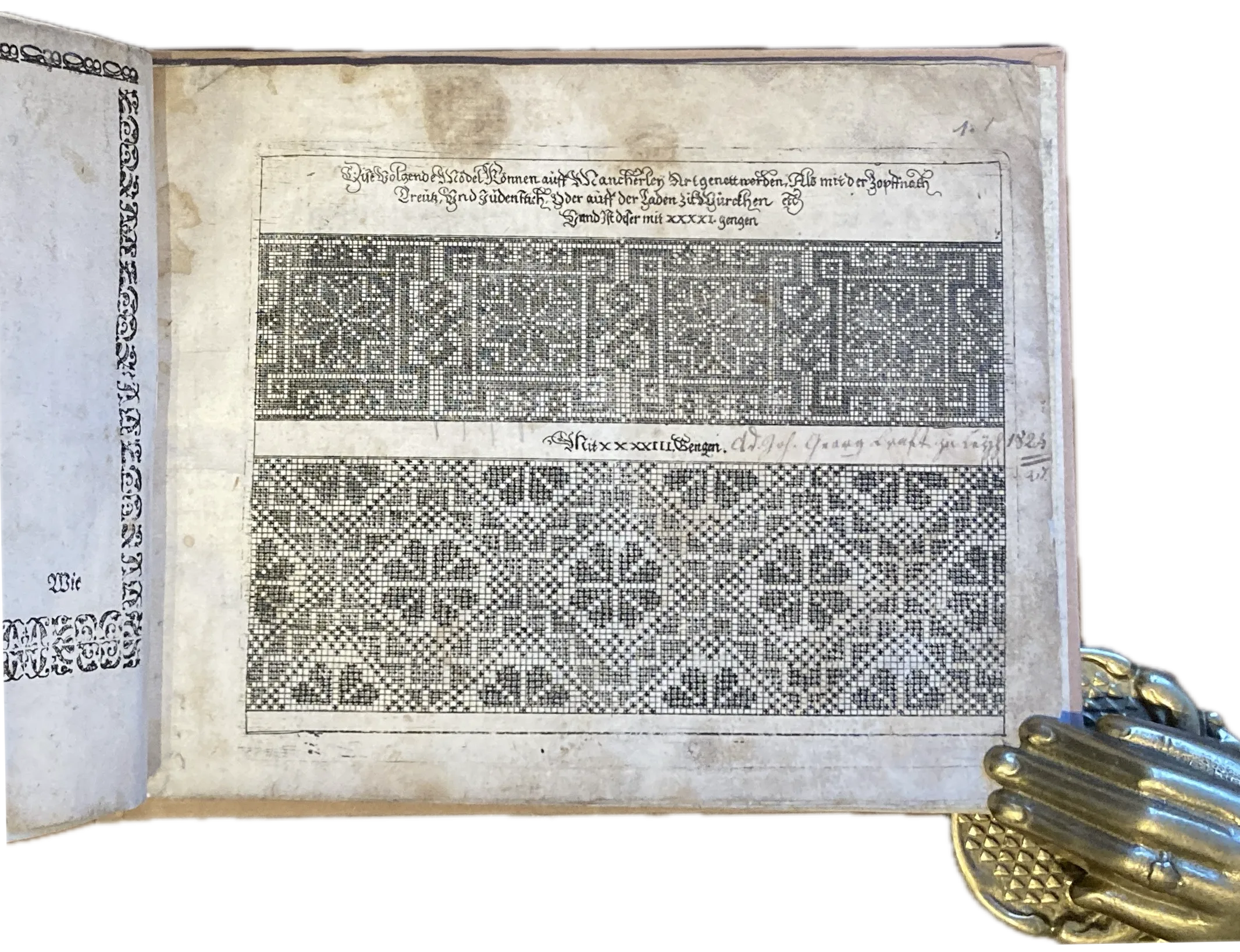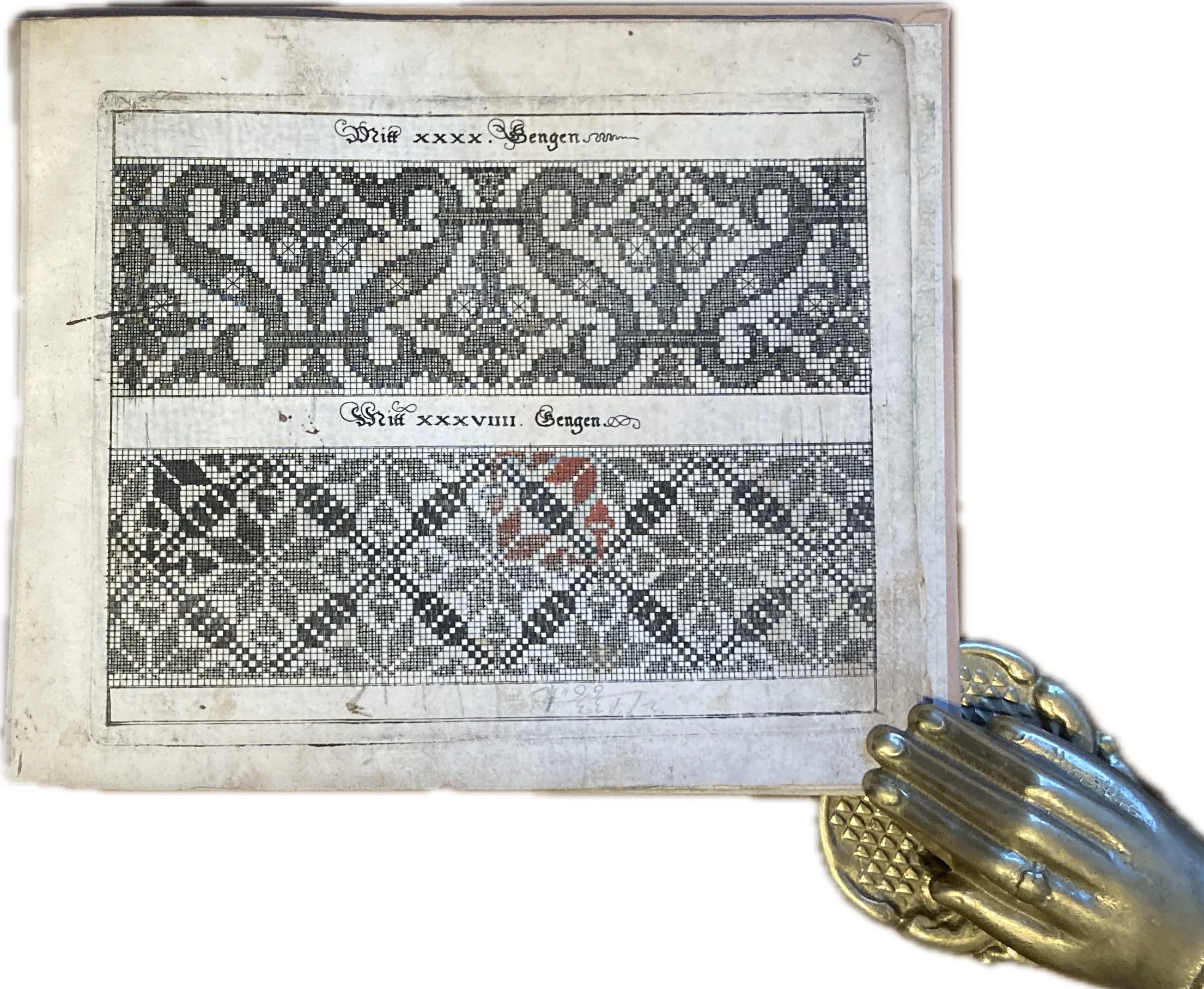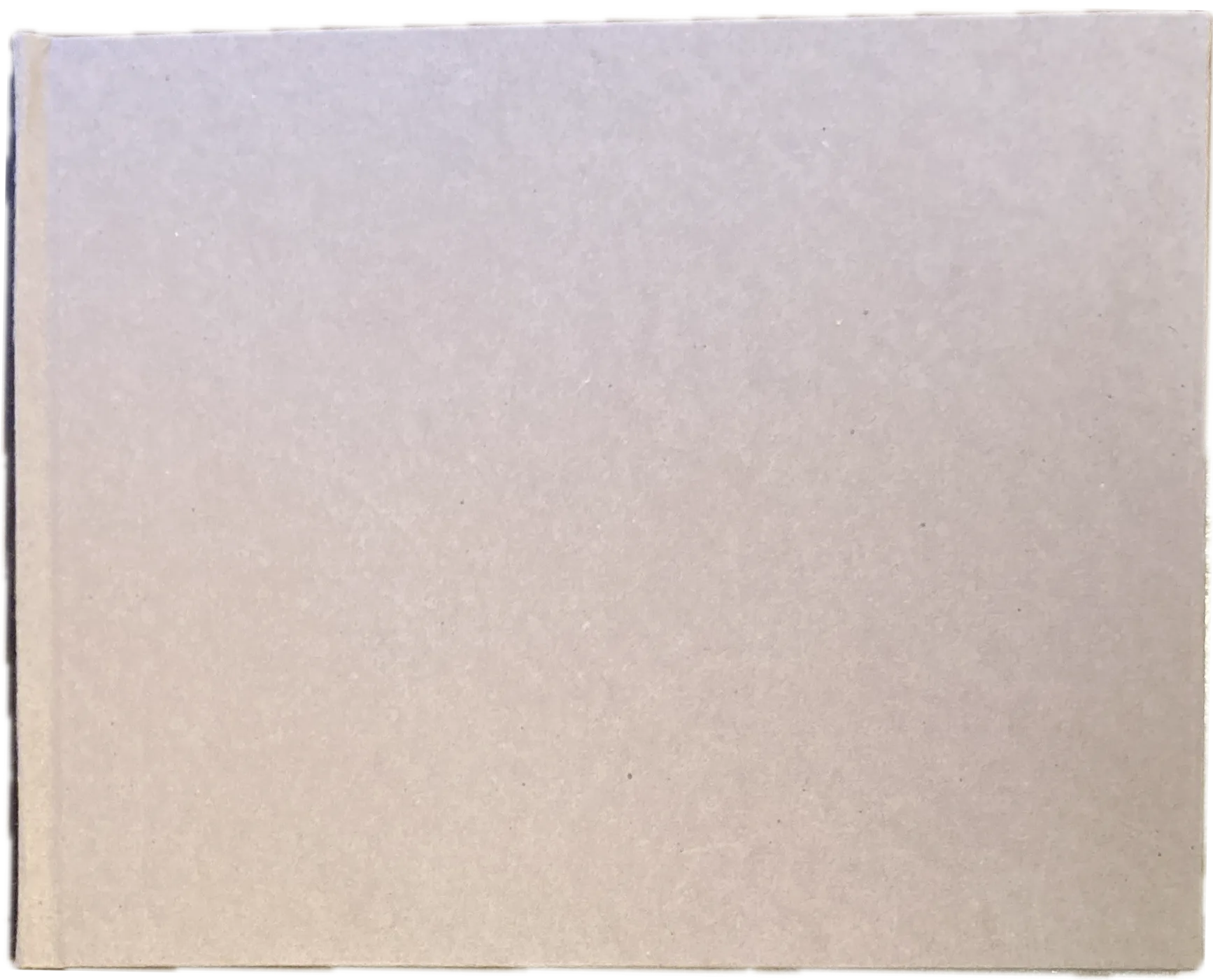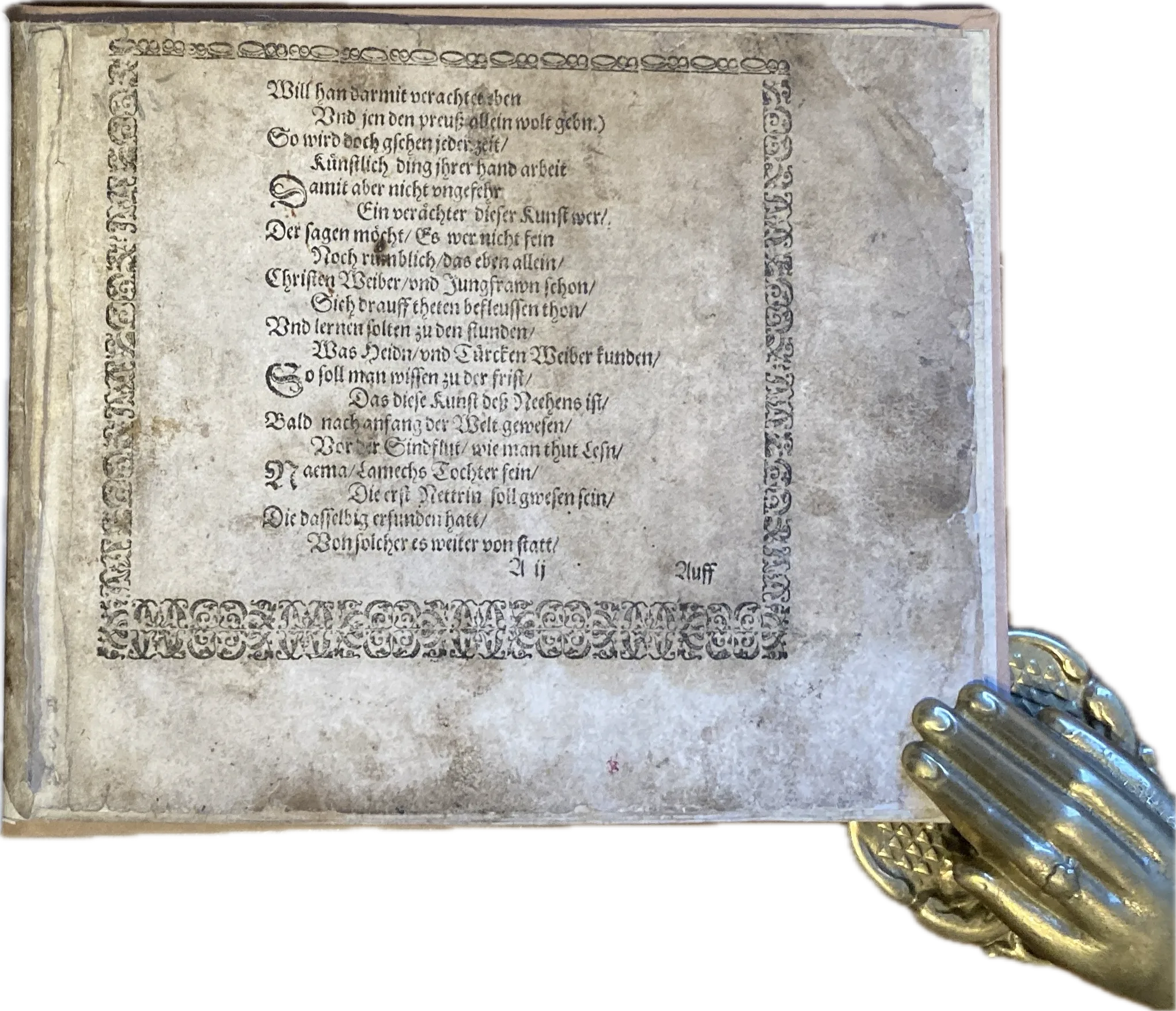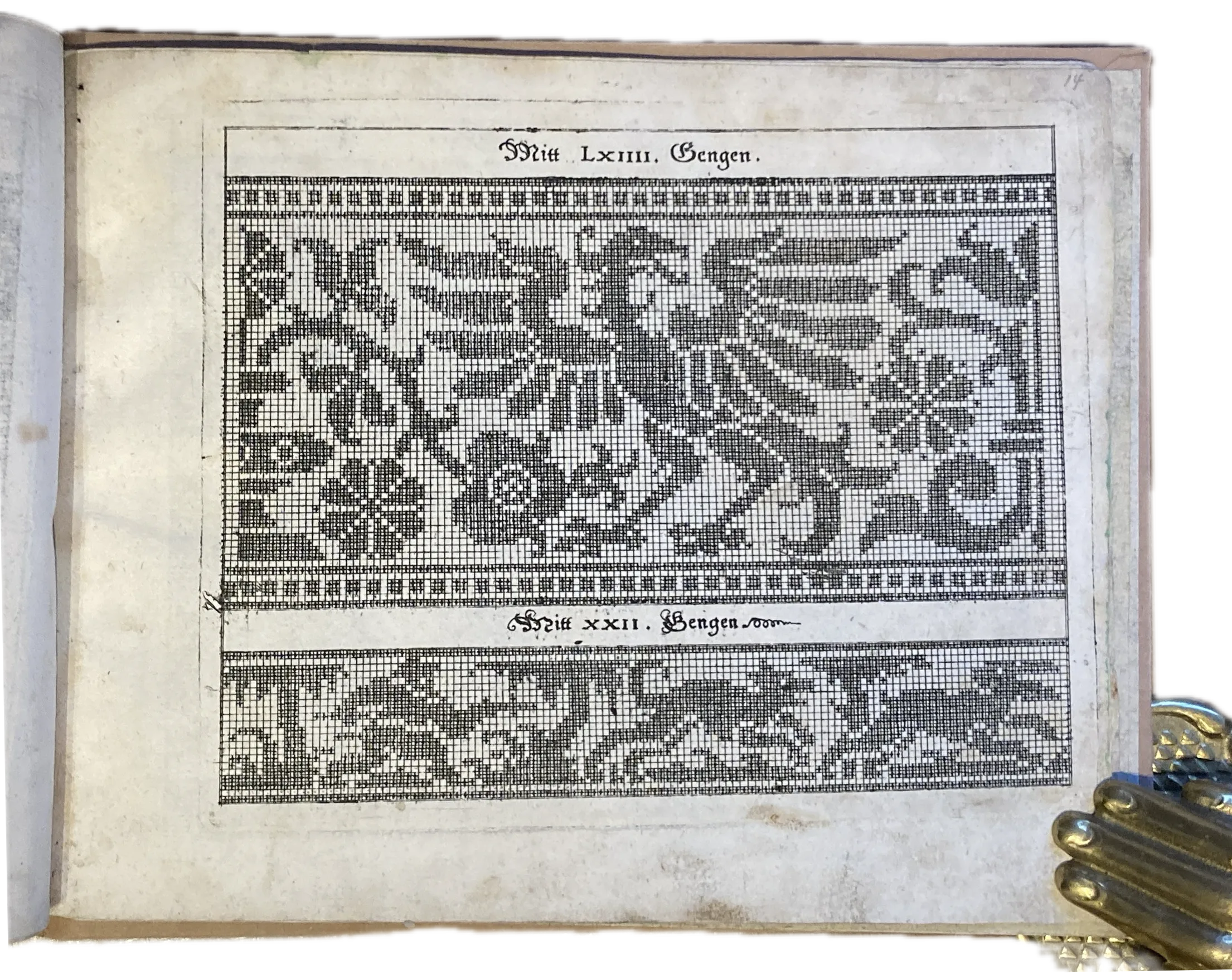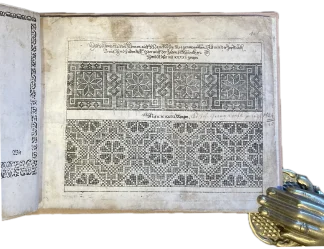SIBMACHER, Johann.
RARE PATTERN BOOK
Schön Neues Modelbuch.
[Nuremberg, B. Caimox, 1597].£2,500.00
FIRST EDITION. Oblong 8vo. ff. [1] + 23 of 43 leaves of plates, lacking engraved title and some preliminaries A 1, 3-4 , 12 plates of patterns and 8 plates with ruling. Gothic letter in two styles, text within typographical border and plates double frame, very fine engraved illustration. Somewhat finger-soiled as usual, rare early red hand-colouring to plates, expert marginal repair to A 2 (prelims) and couple of plates, with loss to engraving on lower outer corner of pl.30. A remarkable survival, in modern paper boards, two C19 ms annotations to plates, one ‘And[reas] Joh[annes] Georg Lauft zu Lauff(?) 1824’, later sketched patterns in pencil to few blank versos. In folding box.
The rare second edition of this remarkable and famous pattern book, which survives in scant numbers and in fragmentary form. An edition of 1591 is mentioned in an auction catalogue slip included in this copy, though not in USTC or OCLC. Johann Hans Sibmacher (d.1611) was a printer and engraver in Nuremberg, renowned for his monumental heraldic collection, ‘Wappenbuch’. ‘Schön Neues Modelbuch’ was a virtuoso tour-de-force of engraving, whereby Sibmacher reproduced on copper, using an etching needle for the intaglio, dozens of intricate patterns for sewing and embroidering. ‘Particularly arresting are the tonal differences he was able to achieve in his patterns by applying a clever system of hatchings, consisting not just of lines but also of geometric shapes that are strikingly similar to […] “punti tagliati”’ (Speelberg, pp.38-9). The designs include animal figures, grotesque and purely geometrical patterns, each specifying the number of vertical stitches (‘gegen’) required. The title of the first plate explains that ‘Judenstitch’ (Jew’s stitch) can also be used for these patterns – a technique which remains unknown and is also mentioned in Chaucer’s ‘Sir Topaz’ (Palliser, p.423). ‘Modelbuch’ continued to be reprinted until the mid-C19 and became the most influential pattern book in Germany and England.
Only Folger copy in the US. VD16 S 6256; Lotz 32a (probably); Berlin Cat. 892. F. Speelberg, ‘Fashion & Virtue: Textile Patterns and the Print Revolution, 1520–1620’, The Metropolitan Museum of Art Bulletin, 73 (2015); B. Palliser, A History of Lace (1869).In stock


